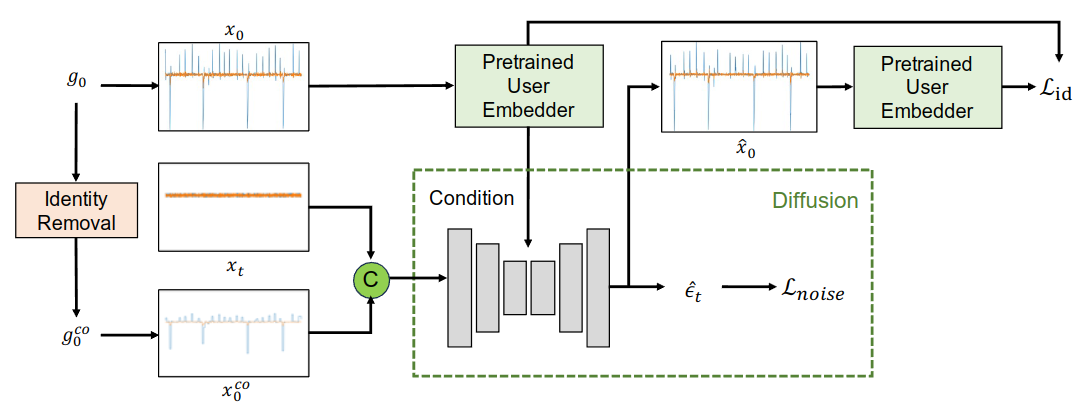DiffEyeSyn: Diffusion-based User-specific Eye Movement Synthesis
Chuhan Jiao, Guanhua Zhang, Zhiming Hu, Andreas Bulling
arXiv:2409.01240, pp. 1–22, 2024.

Abstract
High-frequency components in eye gaze data contain user-specific information promising for various applications, but existing gaze modelling methods focus on low frequencies of typically not more than 30 Hz. We present DiffEyeSyn – the first computational method to synthesise high-frequency gaze data, including eye movement characteristics specific to individual users. The key idea is to consider the high-frequency, user-specific information as a special type of noise in eye movement data. This perspective reshapes eye movement synthesis into the task of injecting this user-specific noise into any given eye movement sequence. We formulate this injection task as a conditional diffusion process in which the synthesis is conditioned on user-specific embeddings extracted from the gaze data using pre-trained models for user authentication. We propose user identity guidance – a novel loss function that allows our model to preserve user identity while generating human-like eye movements in the spatial domain. Experiment results on two public high-frequency eye movement biometric datasets show that our synthetic eye movements are indistinguishable from real human eye movements. Furthermore, we demonstrate that DiffEyeSyn can be used to synthesise eye gaze data at scale and for different downstream tasks, such as gaze data imputation and gaze data super-resolution. As such, our work lays the methodological foundations for personalised eye movement synthesis that has significant application potential, such as for character animation, eye movement biometrics, or gaze-based activity and context recognition.Links
Paper Access: https://arxiv.org/abs/2409.01240
BibTeX
@techreport{jiao24_arxiv_2,
title = {DiffEyeSyn: Diffusion-based User-specific Eye Movement Synthesis},
author = {Jiao, Chuhan and Zhang, Guanhua and Hu, Zhiming and Bulling, Andreas},
year = {2024},
pages = {1--22},
url = {https://arxiv.org/abs/2409.01240}
}

